Partner Content
‘He Felt I Was a Strong Woman’: Two of Helmut Newton’s Muses on What It Was Like to Work With the Notorious Fashion Photographer
Models Sylvia Gobbel and Linda Morand remember career-changing photo-shoots.
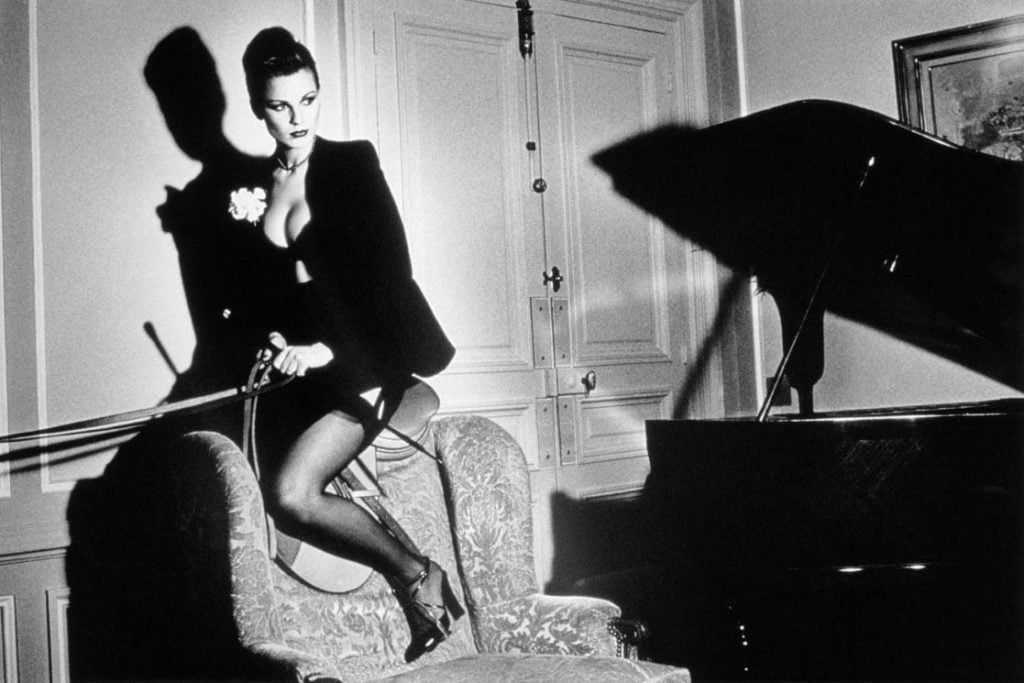
“My women are always victorious,” Helmut Newton once surmised. Of the great fashion photographers of the 20th century, the German-Australian photographer was among the most influential and likely the most imitated. From the 1950s through the 1990s, he perfected a frank, erotic vision that pushed the boundaries of fashion photography.
Certain models came to figure prominently in his oeuvre. These were women who, in Newton’s view, were more than attractive models, standing out as emblems of an empowered sexuality. Among these were Arielle Burgelin, Sigourney Weaver, Gunilla Bergstrom, Charlotte Rampling, and Henrietta Allias (who famously graced the cover of Sumo, Helmut Newton’s extravagantly oversized book). Newton once remarked, “I like photographing women who appear to know something of life.”
Currently, the online fine art photography space ONGallery is presenting a rare selection of Newton’s most highly regarded images. Below, we speak with two of his significant muses, Sylvia Gobbel and Lisa Morand, along with ONGallery director Keith Allsopp, offering insights into the legendary fashion photographer’s career.
Sylvia Gobbel on being chosen for Sie Kommen:
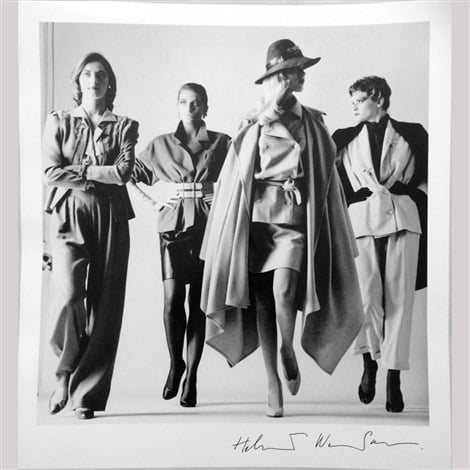
Helmut Newton, Sie Kommen (1981). Courtesy of ONGallery. Models (Left to right): Alexandra Pin, Henrietta Allias Purcell, Lisa Thorensen, Sylvia Gobbel.
“I think he [Newton] selected me because he felt I was a strong woman. I didn’t know it at that time yet. I went to the casting for French Vogue for the 1981 haute-couture edition. We were hundreds of models and he sent an assistant to pick me out of the line. He asked me a few questions and, with my accent, realized I was Austrian. We began to speak German together. It was a great connection, immediately, to speak the same language.
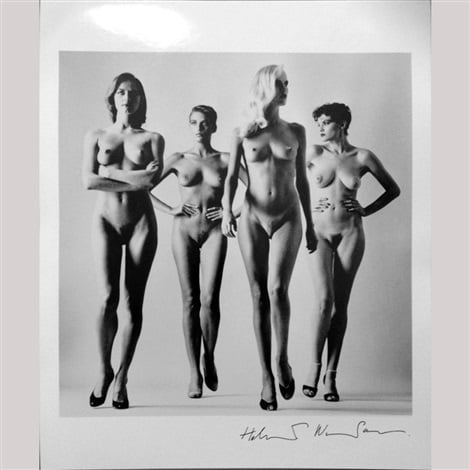
Helmut Newton, Sie Kommen (1981). Courtesy of ONGallery.Alexandra Pin, Henrietta Allias Purcell, Lisa Thorensen, Sylvia Gobbel.
I knew and understood his work. He asked if I would do nudes. I knew his nude photographs, for instance of Charlotte Rampling, and these were fantastic. Of course, I said ‘Absolutely, no problem.’ With any other photographer I would have refused but not with Helmut Newton. He booked me for the photo-shoot, which was the famous photo-shoot of four girls dressed in haute couture, and then the four girls in the same position naked, called Sie Kommen.”
Linda Morand on the Infamous Jackie O shoot for Vogue:
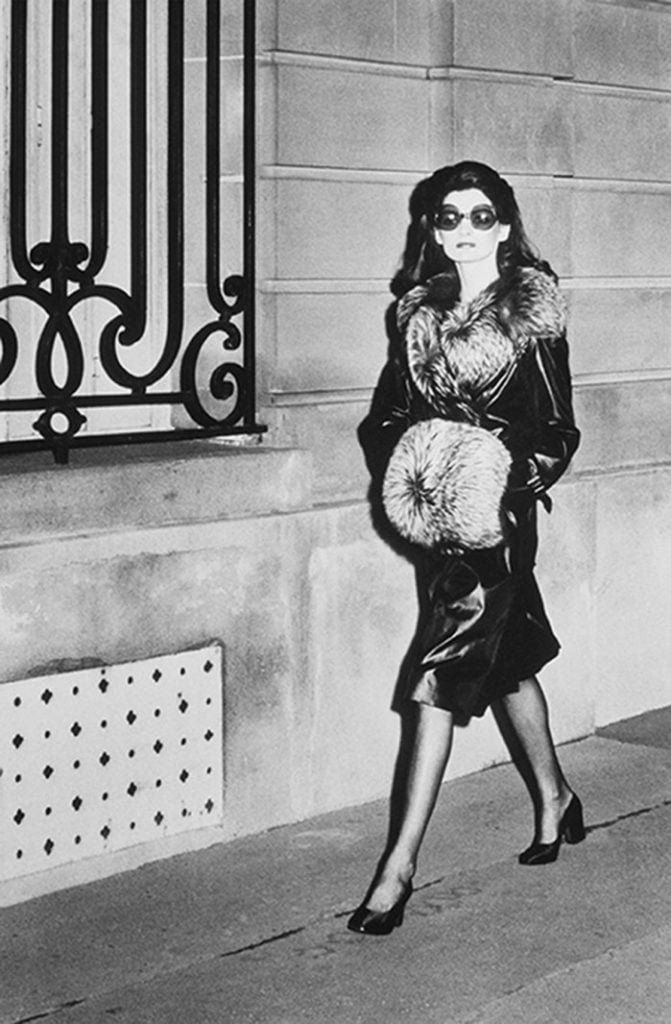
Helmut Newtown, Comme Jackie O. Photograph taken 1970. Print 1985. Courtesy of ONGallery. Model: Linda Morand.
“For my entire career, I had tried NOT to look like Jackie… I was disguising myself (rather unsuccessfully) with short hair and later with plucked eyebrows and dark lips, very un-Jackie. One day I met Helmut Newton who encouraged me to celebrate my own beauty and own my image. He said I should not cut my hair, but wear it long and big, because it suited me and the look of the time.
“He convinced me to stomp around the streets of Paris dressed in haute couture. I did wear couture at the time and had several garments in those styles. It was impossible to resist the temptation to be in Vogue and work with such a great master. (I had worked with him in 1966 at the French Space Center. Those pictures were very good but it was before Newton developed his distinct style).
“We used Vogue studio at Place de Bourbon. I remember that Ursula Andress was also being photographed that day, by someone else. She remarked that I looked so much like Jackie. We went to the American Embassy and the Ritz. He would stake out a location, have me stand there, near policemen or Marines, and have me stroll by. Newton stood across the street and shot with a telephoto lens. It was all very unobtrusive and the Marines and police didn’t realize that I or they were being photographed.
“For the shoot, he directed me to be very forceful, angry and strong, with a serious face. This was contrary to my more gentle, gamine style. The results are a testament to his skills not only as a photographer but also as a director. They looked like paparazzi style photos of Jackie.
“The use of my name was important because as it turned out I looked exactly like Jackie O. She was livid. When the photos were published, people were calling Jackie from all over the world, freaking out that she was in Vogue. If you read the fine print it said I was Linda Morand (Forquet de Dorne), a ‘certain client.’
Rumors of my parentage abounded. Oleg Cassini, the designer who was also romantic interest of mine, was convinced I was Jackie’s secret half-sister. I was appalled. I denied it.”
Dealer Keith Allsopp on Rare & Controversial Triptych:
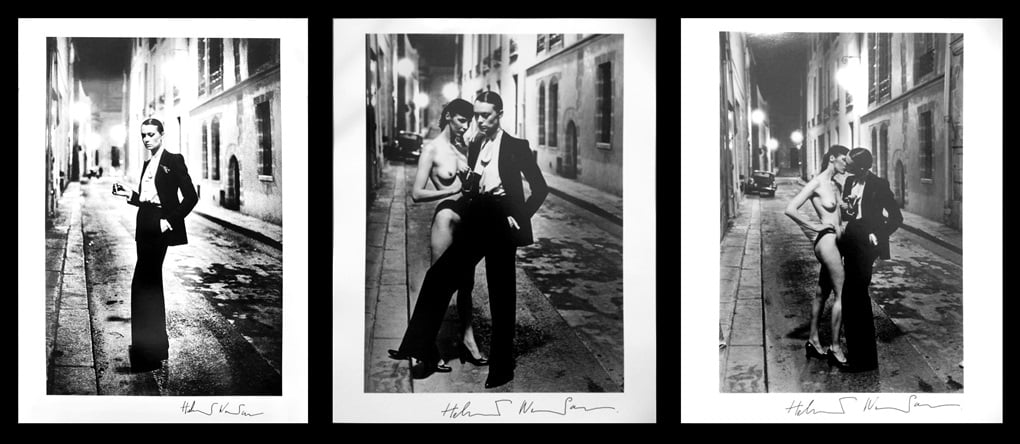
Rue Aubriot, Yves St Laurent, triptych (1975)
Courtesy of ONGallery.
Courtesy of ONGallery.
“To the best of my knowledge, these three pictures, each of them rare in itself, have never been seen together before and, as I can’t find any record of the kissing version having come to market before. I doubt they have ever been available for sale as a triptych before: truly rare individually; uniquely rare together.”
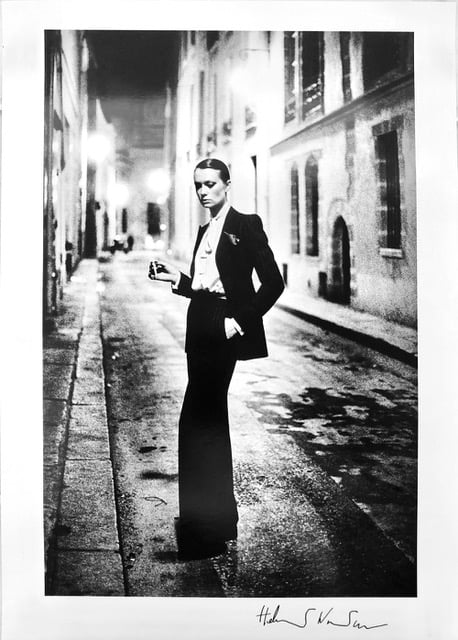
Helmut Newton, Rue Aubriot (1975). Courtesy of ONGallery.
“In the first image, Vibeke Knudsen stands alone dressed in what became known as the ‘Le Smoking’—the signature Yves St Laurent jacket. Newton has deliberately styled her in an androgynous way, perhaps influenced by his friendship with David Bowie. She is waiting in the lamp-lit street, for what, we wonder?
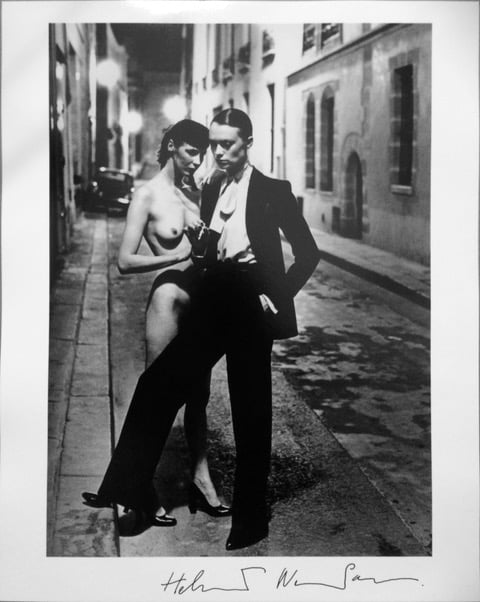
Helmut Newton, Rue Aubriot (two models) (1975). Courtesy of ONGallery.
Now, the story begins to unfold. A car has appeared in the background. Vibeke is joined by a companion, nude except for shoes and a barely-visible veiled hat. Who is she? We don’t know, and maybe never will know. The two are seen in half embrace, as if they just met. It’s sexually charged, but suggestive rather than overtly so.
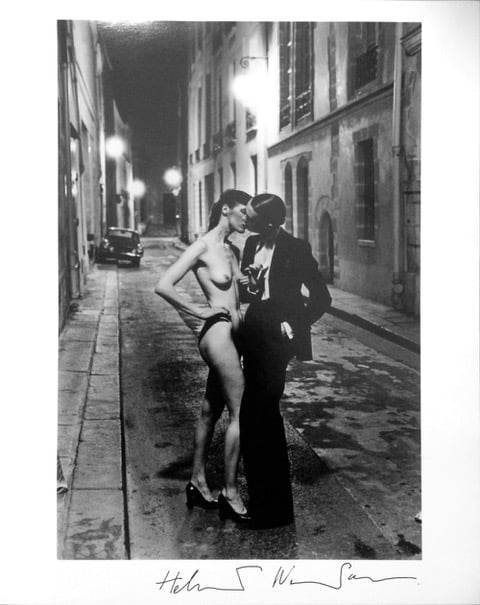
Helmut Newton, Rue Aubriot for Yves St Laurent, French Vogue (1975). Courtesy of ONGallery.
Here, the two models, in the same setting, are seen in a passionate kiss. This is not the kiss of two friends, but of lovers. A highly and overtly sexually charged photograph in an era when same-sex relationships were, generally, still taboo and in many countries illegal. The story is complete. This picture was selected as an addition by June Newton in her revision of Newton’s book Sumo, published in 2013, which then accompanied the preceding two images. Perhaps she concluded that attitudes had changed enough for its publication. I don’t recall seeing it in any other publication, and this is only one of two that I have ever seen available for sale. It is the rarest of Newton’s pictures that I know.”

SHARE
Article topics

No comments:
Post a Comment